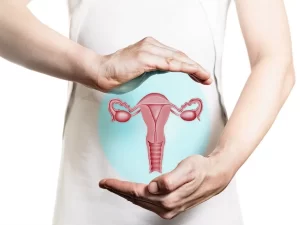
DR. M. WASIM GHORI
He is a practicing Diabetologist and serves as the Group Medical Director for a chain of Specialty Clinics – AMSYS Heart & Diabetes Clinic, Mumbai

Hypertension is a common co-morbidity affecting nearly 60% of people with diabetes. In fact, the risk of developing hypertension in people with diabetes is 2 to 3 times higher as compared to those without diabetes. Interestingly, the co-existence of diabetes and hypertension in the same individual is not a coincidence. The pathophysiology and the risk factors such as obesity, smoking and insulin resistance are common to both the conditions. Studies report that nearly 85% of people with diabetes have high Blood Pressure (BP) and almost 50% of people who have high BP develop diabetes. The link between diabetes and hypertension is thus very clear. Hypertension is one of the most critical risk factors for the development of heart disease in people with diabetes. Hence, regular monitoring and control of BP in diabetes are of utmost importance.
Hypertension: A risk factor for diabetes complications
Hypertension is a significant contributor to macrovascular complications such as heart disease and stroke. It also markedly increases the risk of microvascular complications that include retinal damage, kidney disease or foot disease. Studies reveal that up to 75% of heart problems in people with diabetes may be caused due to hypertension. This is the reason experts recommend aggressive treatment to maintain BP to <130/85 mm Hg in persons with co-existent diabetes and hypertension.
Why is regular screening of BP important?
Studies report that tight control of BP can cause reductions in the risk of stroke, cardiac events and diabetes-related mortality. Researchers have observed that in patients with diabetes a diastolic blood pressure (DBP) of less than 80 mm Hg shows 50 % reduction in major cardiovascular events compared with those whose DBP is less than 90 mm Hg. One study reported that each 10-mm Hg decrease in mean systolic BP shows a significant reduction in the occurrence of episodes of heart attack, risk of death and risk of complications to eye, foot or kidney.
Regular screening and treatment for elevated BP should, therefore, be an integral part of a comprehensive treatment plan for diabetes that also includes blood sugar control, cholesterol lowering and lifestyle changes.
Guidelines for BP control in diabetes
Consensus guidelines from the American Diabetes Association (ADA) and other well-known committees have the following suggestions
- People with diabetes and hypertension should be treated to get a BP of less than 140/90 mm Hg.
- For people who are at high risk of heart disease, BP goal of 130/80 mmHg is appropriate if it can be achieved without excessive treatment burden.
- For people with BP more than 120/ 80 mmHg lifestyle changes such as weight reduction, diet changes, salt restriction and increased physical activity are recommended.
- For people with BP reading higher than 140/90 mmHg, BP lowering medication is recommended in addition to lifestyle therapy.
- For people with BP reading higher than 160/100 mmHg, in addition to lifestyle therapy, a combination of two BP lowering medication needs to be started immediately to reduce cardiovascular events.
Effective BP treatment approach
For control of BP in people with diabetes, clinicians follow a comprehensive plan that includes lifestyles changes and medications. For most patients, combination therapy of two or more medications is required to attain a BP of less than 130/80 mmHg. After a diagnosis of high BP (≥ 140/90 mm Hg), lifestyle interventions are advised, which need to be followed even after medications are started. Monitoring BP at least monthly, or as often as needed, is necessary to achieve target BP. Let’s look at the influence of different treatment modalities on lowering BP in diabetes.
- Weight reduction
Research reveals that almost 85% of people with diabetes are overweight and about 50% are obese. Obesity is associated with worse blood glucose and other cardiovascular risk factor control. Studies have found that losing 1 kg of body weight can show a decrease in BP by 1 mm Hg. Weight loss can also improve blood glucose and lipid levels which favours diabetes control. Given the available evidence, weight reduction should be considered an effective measure in the initial management of mild-to-moderate hypertension.
- Sodium restriction
Overeating salt increases the amount of sodium in the body. It further makes it difficult for the kidneys to remove excess salt and water from the body, causing BP to rise. Hence, the expert guidelines stress on reducing salt intake to lower BP. Studies report that a reduction in salt intake from 4,600 mg to 2,300 mg per day can reduce systolic BP by almost 5 mm Hg and diastolic BP by 2–3 mm Hg.
- Physical activity
World Health Organization (WHO) recommends at least 150 minutes of moderate-intensity aerobic physical activity to all the adults aged 18 to 64 years, including those with hypertension and diabetes. Regular exercise can lower BP naturally and thus reduce the dose of antihypertension medications.
- BP lowering medications
The choice of medicines depends on the severity and stage of hypertension. People who have BP more than 140/90 mm Hg require a single medication initially along with lifestyle change. However, if the BP is higher than 160/100 mm Hg, a combination of two antihypertensive medications is recommended. ACE inhibitors and ARBs are preferred agents in the management of patients with hypertension and diabetes. If BP is not lowered with these medications, then a diuretic is needed. Beta blockers are recommended for people who have diabetes and a history of heart disease. Most patients with diabetes require therapy with a combination of antihypertensive agents to achieve target BP.
Take Home Message
Hypertension is common in people with diabetes. It is considered a major risk factor for the development of severe heart disease, which is the leading cause of morbidity and mortality in people with diabetes. Increased BP also raises the chance of having microvascular complications such as retinal disease, kidney problems and foot disease in people with diabetes. Hypertension can thus be considered as the most significant contributor to the direct and indirect costs of diabetes. Expert guidelines recommend checking BP in people with diabetes at every visit. They may also need to monitor the BP levels at home. A comprehensive treatment plan that includes a low-sodium diet, increased physical activity, along with appropriate medication, can control BP in diabetes and prevent further complications.







